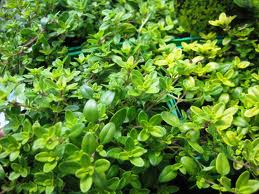





The great virtue of a small town garden is that it can be looked after easily without much exertion. With effort, on the other hand, every individual plant can be cared for and really remarkable results obtained. One factor does need to be kept in mind. Luxuriant plant growth from a small area of soil does naturally tend to deplete it: generous foliar feeding with a proprietary liquid plant food is very necessary and a small compost heap where every bit of garden and kitchen refuse is kept should be seriously considered. There are enclosed containers now available which could sit in the dustbin corner and provide a continual amount of organic material.
If there is only a small garden and the owner is keen on plants, there is a very natural tendency to use too many single species to get a really good general effect. A better analogy, however, is with the drawing room indoors: this may possess fine furniture strewn with dearly loved collections of glass and porcelain and so on. But unless some restraint is shown in the number of objects and unless the groups are complementary, the effect is of a magpie accumulation.
This is not to pursue the purist idea to absurdity, merely to emphasise the need for a general as well as a particular eye. In choosing plants for a restricted space, their all-year-round value should be assessed. The now well-known winter flowering shrub Mahonia japonica is a case in point. This is a plant of superb shape and habit with great cartwheels of glossy leaves, which, in spite of being evergreen often colour beautifully in autumn. In October long trails of pale primrose-yellow flowers start to open, they are deliciously scented, and there will be some out until the following April. New shoot growth then begins which is soft and of a delicate powdery purple colour, gradually attaining the strength of the fully grown leaves. Altogether a remarkable plant which is not fussy as to soil and will accept both sun and shade.
Obviously few plants are such paragons and there is a danger that they become overused to the point at which familiarity breeds contempt, nonetheless they should be sought. And in the seeking some plants will appeal particularly and personally to oneself and earn their all-round keep because of it. It may be, for example, that deep-purple lilac is a top favourite plant without which a garden would hardly be wanted. If that is the case no more need be said. But if, on the other hand, it is not a major passion the question should be asked whether this big bush, albeit lovely for three weeks of the year, justifies its ugly leaves for six months and its bare branches of no particular merit for the other six.
 There is no reason why town gardeners should be denied the pleasures of their own edible produce. The warmth of an enclosed courtyard is ideal for a trained fig and its leaves make a lovely pattern against a plain wall. Several varieties of grapes succeed admirably. More mundane, but no less acceptable on the table, are runner beans. These started life here as ornamental plants and they really do look well with their large leaves and scarlet flowers. Town courtyards are also good for containers of sweet peppers and, of course, tomatoes. A currently effective method is the plastic bag of nutrient-impregnated peat which you slit and plant up. Unfortunately, plastic bags gaily advertising their makers hardly add to the scene, but with care their utilitarian brashness can be disguised.
There is no reason why town gardeners should be denied the pleasures of their own edible produce. The warmth of an enclosed courtyard is ideal for a trained fig and its leaves make a lovely pattern against a plain wall. Several varieties of grapes succeed admirably. More mundane, but no less acceptable on the table, are runner beans. These started life here as ornamental plants and they really do look well with their large leaves and scarlet flowers. Town courtyards are also good for containers of sweet peppers and, of course, tomatoes. A currently effective method is the plastic bag of nutrient-impregnated peat which you slit and plant up. Unfortunately, plastic bags gaily advertising their makers hardly add to the scene, but with care their utilitarian brashness can be disguised.
Fresh herbs are invaluable. The shrubby types, rosemary, thyme, savory are happy in the miscellany of a flower border, so long as it is sunny. Mint is best in a shady corner, well separated from other things because it can take over an area in no time. Parsley can be scattered anywhere it will grow, as the leaves are always good to look at as to eat.
Copyright © www.100flowers.win Botanic Garden All Rights Reserved